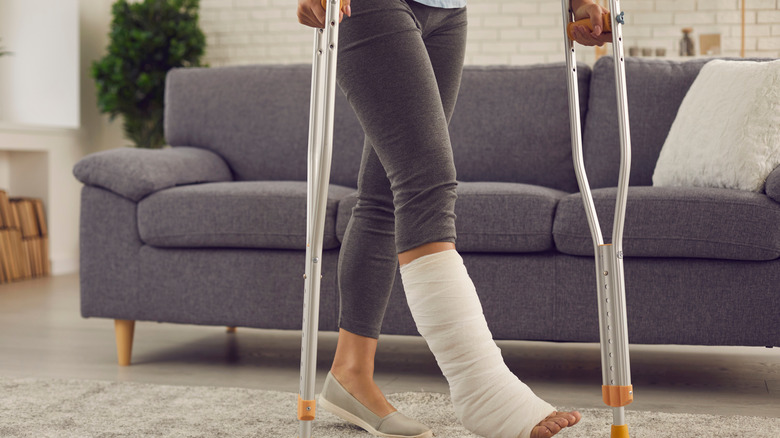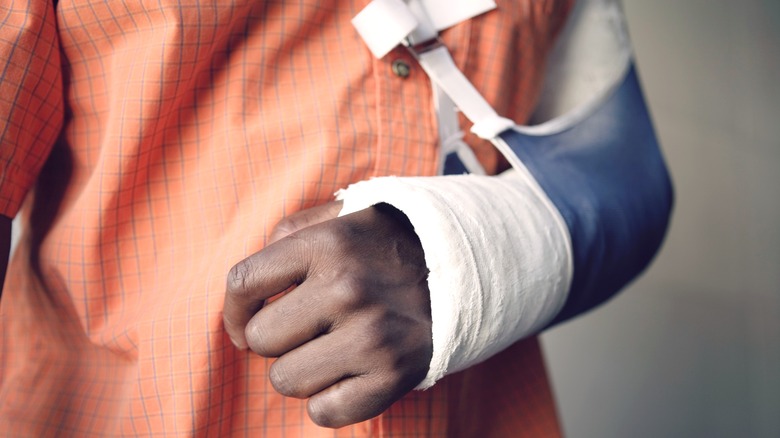The First Thing You Should Do When You Break A Bone
Broken bones, also known as fractures, happen to millions of people in the U.S. each year (via Cleveland Clinic). If you've been unlucky enough to experience one, your bone may have split along the length, across the width, or even into two pieces (known as a complete fracture).
Even though bones are strong, they can break due to an external force, such as a car accident, fall, or sports injury, according to the American Academy of Orthopaedic Surgeons. People suffering from osteoporosis are also more likely to break a bone, and repetitive motion can even cause what's called a stress fracture. When a bone breaks, there can be swelling, tenderness, and bruising, and if the break is severe, the bone can look out of place or even pierce through the skin.
The most common broken bones are the collarbone, forearm, wrist, ankle, and hip (via MedicineNet). Breaks to the hands and fingers are also very common due to daily use. Breaking a bone can be scary (and painful), but knowing how to respond to a break can help.
Know what to do ahead of time – and don't panic
If you think you've broken a bone, you should first make sure to stop any external bleeding that might have resulted from the injury (via Healthline). If you can do this yourself, apply pressure to the bleeding area and elevate it if possible. Second, immobilize the injured area. If you've broken a bone in your leg or arm, try not to move the limb at all by putting it in a sling or splint. Third, apply ice or a cold pack to the area to help reduce swelling. Then seek professional medical aid as soon as possible.
If you suspect the break is more serious, like in your neck or back, don't move. Call for help, and ask someone to call 911. The same is true if the bone has gone through the skin or if you're bleeding heavily. In these cases, your best plan of action is to seek professional aid immediately, per Healthline.
Treatment for a broken bone may include surgery, depending on the bone and type of fracture, but typically a doctor will stabilize and immobilize the bone (with a splint or cast) and then recommend RICE (rest, ice, compression, and elevation) (via MedicineNet).


